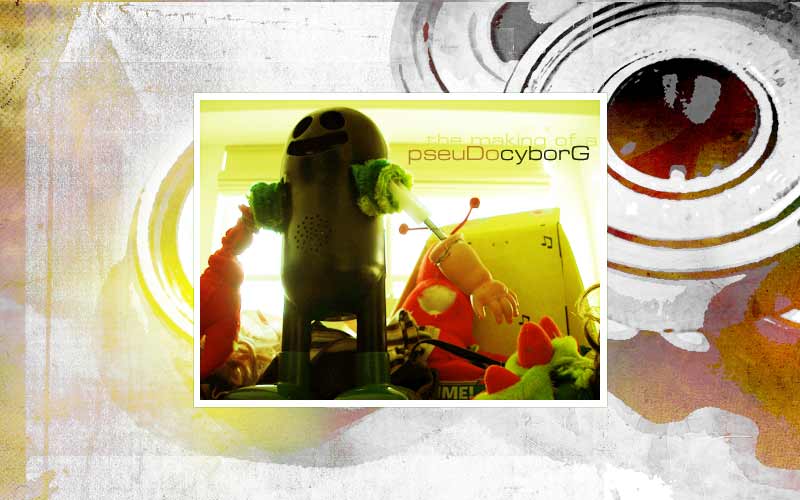
| I started this project to express my frustration. We live in a place and time where people think cyborgs are among us, and I disagreed. When one of my favorite sci-fi blogs prefaced a column on cyborg movies with the statment "I am a cyborg, because I wear contacts and have lifts in my shoes" I yelled at my computer screen. |  |
You
see, I didn't think that someone wearing prosthetics qualified as a
cyborg. I got my definition from Donna Haraway's Cyborg Manifesto. You
see, I thought, I truly believed, that cyborgs weren't just an amalgam
of man and machine. The key, I thought, to cyborgs were that they were
a fusion of the two that challenged the way we defined humanity. Cyborgs
were/are the creatures that make us wonder about the artifical boundaries
we've drawn between nature and science, the beings that questioned,
and possibly destroyed, the boundary between artifical and natural. |
|
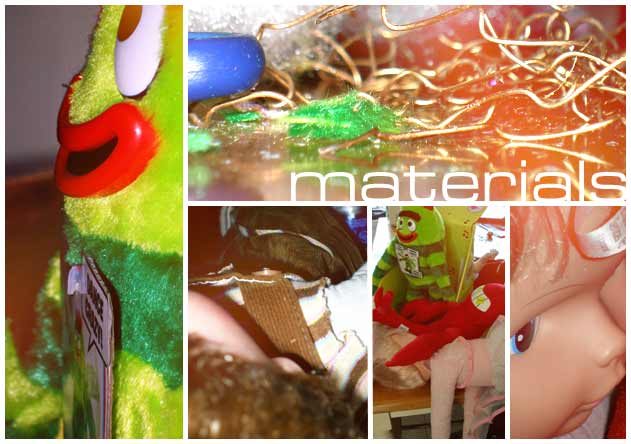 |
I
thought I wanted to start out with soft dolls about six inches in size. I wanted to use a Barbie leg as my prostetic, as a way to address the idealized and constructed nature of these "pseudo-cyborg" bodies. However, when I went to look for these ideals, instead I found sixteen inch baby-dolls. Along with two dolls I found with hard heads and baby-doll faces came a "Dance Time Brobee" doll. It's green. It's mechanical. It throws its arms into the air and does a little dance. I was fascinated by the possibilities of taking this doll and moulding it, finding ways to fuse it the baby-dolls. Oh, and there was a red stuffed lobster too. |
My pseudo cyborg had to combine elements of the
animal, the human, and the cyborg. I wanted to reveal the monster under the green clothing, the mechanical cyborg - but instead found a smiling black plastic face with metal and plastic arms. By happy chance the green fuzzy fabric was glued to the arm sockets and around the bottom of my cyborg's feet. For the animal, it acquired a red-plush claw from a crab. Useful for grabbing, clamping, and snuggling. For the human, it received the chubby baby arm from one of the soft dolls. I love these arms because they work on so many levels: they are an idealized version of a chubby child's, a representation of an ideal child part. Since I'm using them as my stand-in for the human (remember, one of the few Actlab rules is no harm to others!) it is a representation of a representation. |
 |
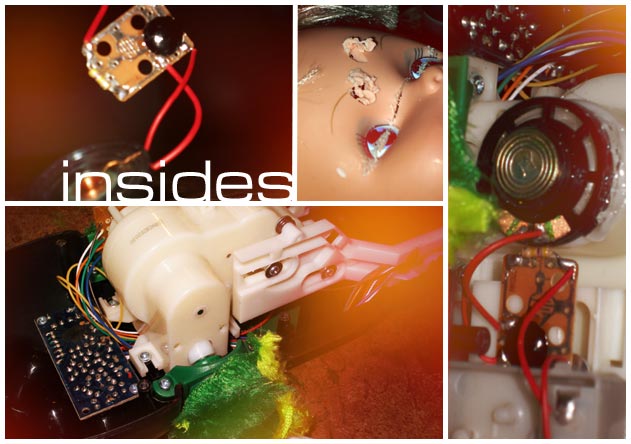 |
From
outside to the insides. My pseudo cyborg is not a static creature. It
already moved, swinging its arms in a zombie-like movement, its legs
pumping up and down, the speaker in its chest emitting high-pitched
laughter and a frightful, repetative song. By happy chance one of the baby-dolls also had a little sound box inserted into its chest. I cut this out, hoping to graft the two sets of sounds together. I also wanted to see if I could find a way to twist the circuts, transforming the sound from the racous to the deranged. Sadly, it was not meant to be. Although I was able to get inside the body, I wasn't able to twist the circuts to my own ends. Instead I ended up breaking the smaller of the circuts, detaching the wires I'd tried to glue in place enough to activate whenever the pseudo cyborg moved. |
|
| I also wanted to cut into the head, exposing the brain, the cyborg mind, to the possibilities of the universe. What I ended up with was some hacked plastic (the head resisted cutting, punching, and sanding). | ||
Finally,
though, the pseudo cyborg was "complete". The baby arm was
reinforced with a set of wire musles creating the rest of the arm. The
body was covered - wrapped up - in the jumper and corderoy pants ensemble.
The baby-doll head was attached. The pseudo cyborg stands here in all of its glory - waiting the ceremony tomorrow that will transform it once again. |
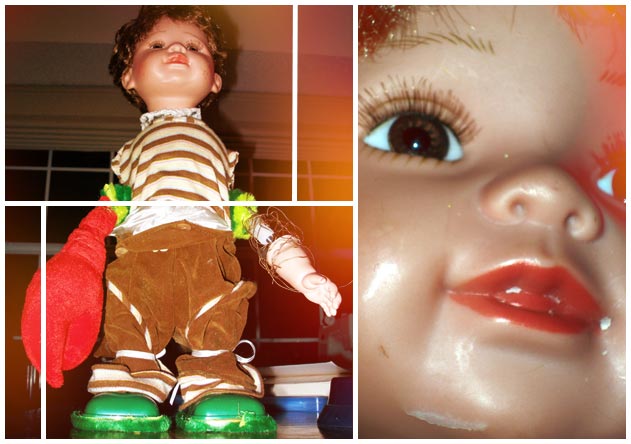 |
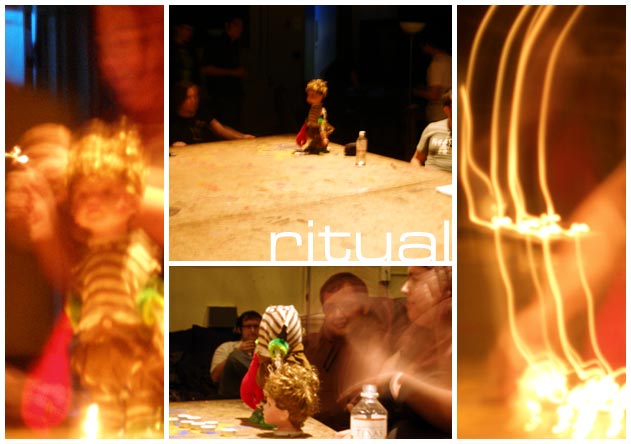 |
I wanted to bring an element of mysticism to my creation, complicating my scientific representation, so I enlisted four classmates to help me light candles invoking the cyborg spirits of Donna Haraway, Fritz Lang, Tsukamoto Shinya and William Gibson. I then asked the spirits to inhabit the pseduo cyborg, and activated its dance mode. For a last act I ripped the head off of the dancing pseudo-cyborg, setting it back on the table so it could do another set of dance moves headless. |
|
| What I learned: to be honest I changed my very focused definition of cyborgs. Not that emotionally I'm not still invested in my own definitions, and not that I might possibly react the same way if I encountered someone claiming to be a cyborg in the future. But Sandy, during our discussion, brought up one of Donna Haraway's intentions in her dicussion of cyborgs - she questioned WHO it is who gets to define what cyborgs are, and what is their justification / how do they legitimize their own views? Does it come from their accquaintance with the canon of visual cyborg representations? Does it come from their engagement with theoretical works? As I noted before my own comes from my engagement with theoretical works - from my own readings of academic documents, those presented to me in a certain kind of setting, that I've engaged with in a certain kind of way. But that doesn't preclude other perspectives, with other voices. | ||